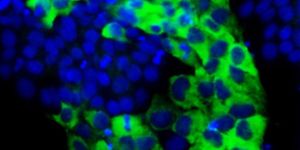Sniffing Out Parkinson's: What the Nose Knows
The underappreciated sense of smell is making headlines in the world of diagnostics. In a recent study, researchers link poor sense of smell to a higher risk of Parkinson’s disease. The results suggest a sniff test for Parkinson’s may not be too far off in the future.
Results from a few studies suggest that a reduced sense of smell may be an early symptom of Parkinson’s disease. Some studies even suggest the olfactory changes could come years before the onset of the more characteristic motor symptoms. But these associations are not conclusive, as olfactory changes is not a predictor of Parkinson’s disease in all people.
To learn more about the link between the nose and Parkinson’s disease, researchers from Michigan State University analyzed data from over 2,4000 people. The cohort consisted of mainly older adults with an average age of 75 years old.
These participants were asked to identify a series of 12 different odors, including some distinctive substances such as gasoline, onion, and cinnamon. The ability of the participants to identify the odors was quantified into a score. In the end, the researchers divided the participants into three groups: poor, medium, and good sense of smell.
After 10 years, the researchers collected data on people who had gone on to develop symptoms of Parkinson’s disease. They found 42 people had been diagnosed with the condition.
When sense of smell and Parkinson’s diagnosis were compared, researchers found that people who had the worst sense of smell had five times the risk for the disease. The risk was highest in the first six years after the sniff test, but persisted throughout the 10 year study duration.
Interestingly, this link seems to change depending on sex and race. When analyzing the link between males and females, researchers saw that men with a poor sense of smell were at higher risk of the disease than women who had equally poor sense of smell.
But, when considering the link in white versus black participants, the association seemed to go away. Of the 42 people who developed Parkinson’s disease, 30 people were white, while 12 were black.
"Reasons for this potential racial difference are unclear," the authors write. "One possibility is that, compared to white participants, the etiology of olfactory dysfunction in black participants is more diverse and complex, and that Parkinson's disease-related pathology is a relatively minor contributor."
While the results present supporting evidence that olfactory senses may be involved in the development of Parkinson’s disease, the study does not provide conclusive proof of this phenomenon. However, the possility of a sniff test to detect Parkinson’s disease is undoubtedly exciting.
Parkinson’s disease is a neurological disease characterized by progressive neurodegeneration, causing severe impairments in movement. This disease affects nearly 10 million people worldwide. Most often, the disease is associated with involuntary, uncontrolled tremors; however, patients can also suffer from muscle stiffness and the difficulty moving or speaking. Because the disease is progressive, symptoms worsen over time. There are no cures, but medications can improve some of the symptoms, especially if the disease is diagnosed at early stages.
Additional sources: MNT, Michigan State University









